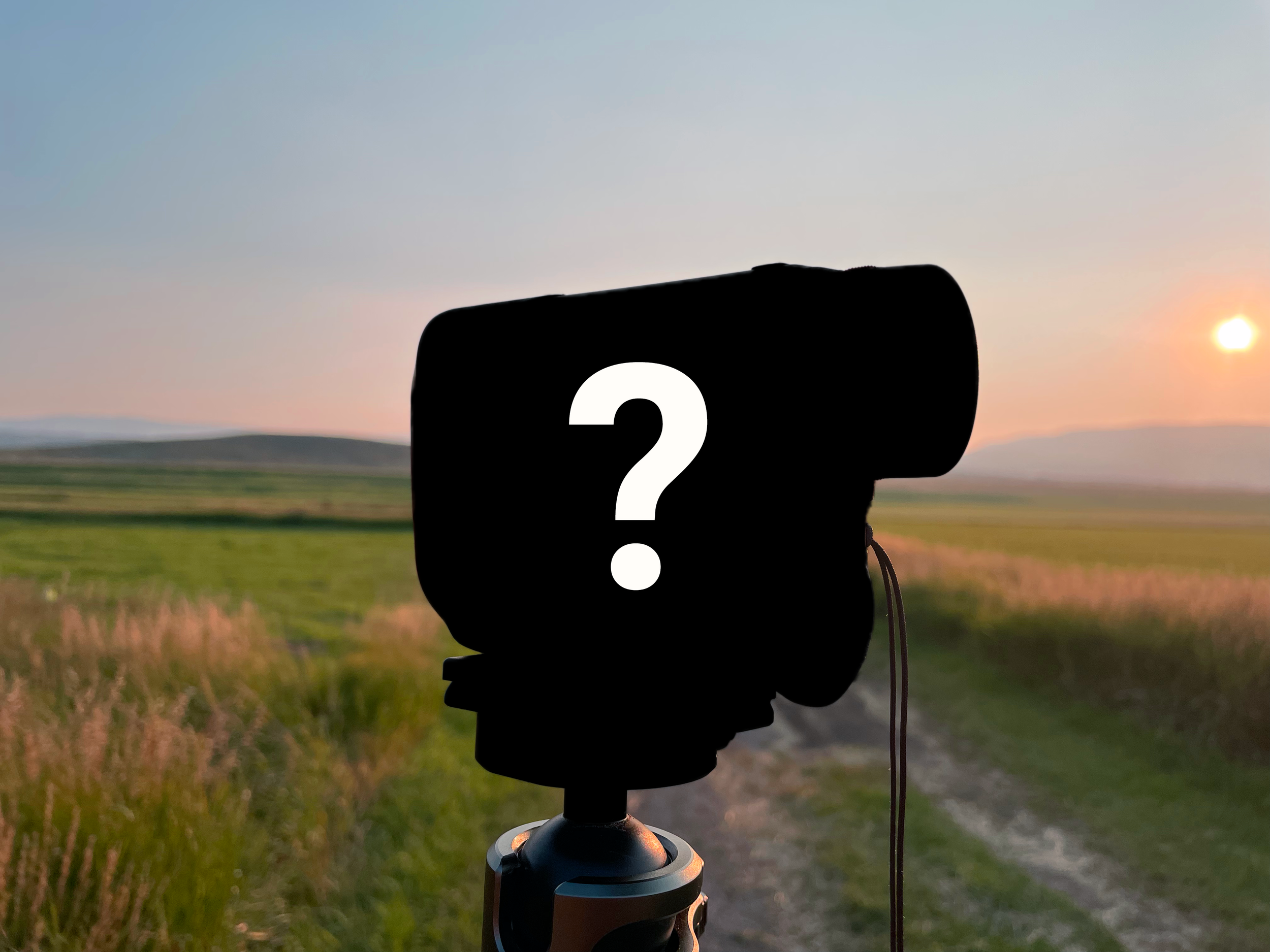How To Pick A Rangefinder
This article was originally published on Hunttoeat.com in November 2021.
“Back in my day, we didn’t have any fancy rangefinders; we just guessed yardage!”
I can hear my dad’s voice clear as a bell. As he said, that was back in the day. Today, if you are concerned with making the quickest, clean, ethical kill on an animal, having a rangefinder is a must.
While the debate over extended distance hunting is is a hotly debated topic–even if you’re a point-blank shooter–today’s electronic rangefinders are a handy tool. Anywhere you have a little space to breathe, rifle hunter or archery enthusiast, muzzleloader user or handgun aficionado, it’s nice to have a range finding device in your hunting repertoire.
Rangefinders span the breadth of prices. I bought a $50 rangefinder from the local Ace Hardware when I started archery hunting. Then, I upgraded to a $200 unit after the cheap-o went to the great shooting range in the sky. This year, I upgraded to the better-tier of rangefinders with a $400 Maven RF.1. Each of these three rangefinders has helped me progress as an archer and a hunter overall. They, plus elite versions and range-finding binoculars, all serve their purpose for different hunters in their shooting and hunting evolution.
Here’s how you can decide which rangefinder is right for you at the stage in hunting you find yourself in.
The Cheap Rangefinder
While I do not recall the exact price, the first rangefinder I bought was the cheapest in the store. Essentially, I wanted a rangefinder to tell me if I knew how to sight in my new compound bow sights at the proper distance.
The cheap rangefinder lacks extended distance accuracies, quickness in readouts, readout brightness, and durability. If you want to improve your rifle skills, getting accurate ranges past 300 yards can be tough with one of these lower-tier rangefinders. When you do, it takes multiple clicks and some moving around to get the most reflective object in the distance to give you a readout.
The $50 rangefinder helped me get accurate enough to take my first few big game animals with a bow and rifle. It didn’t hinder me from practicing or making those novice archery shots in the field that were all quite close. It died on me at an inopportune time, though. As I was going archery hunting, I tested it and realized it suddenly wasn’t working. Being someone who anxiously keeps fresh batteries in such vital equipment, I pulled my rangefinder battery out of the unit only to realize the wires had come apart and my rangefinder was toast.
The Good Rangefinder
I figured it was time to upgrade anyway and went down to the local sporting goods store to buy a new rangefinder. I found a Redfield Raider 650 on sale, though the original MSRP sat at $200. I later found out this was because the replacement model has an inclinometer built in so you can receive horizontal distances, not just the line-of-sight a basic rangefinder can deliver.
While it was a simple rangefinder in the scheme of things. It could range out to distances twice what my old rangefinder could and had a 6-times magnification lens to look through. That magnification makes it much easier to find further rifle targets. It is water-resistant and, as far as I know, it’s still ticking as my friend Auna has taken it over.
Most rangefinders in this category will cover the majority of the average hunter’s needs. The inclinometer that’s common in this tier gives you accurate readouts while shooting steep angles, and you get quick and crisp returns on your yardage compared to the lower-level rangefinders.
This level, however, lacks quick readings in the longest of ranges (1,000-plus yards) and it’s tough to get rangefinders in this level that can tell distances through brush, grass, or other slight obstructions. For archers, getting a quick reading while poking your head above the sagebrush, or leaning around a pine tree to range a bull is crucial to getting your bow drawn and making an accurate shot. I had a few instances where I released arrows at animals where the distance returned in my rangefinder was something in front of the critter, so my arrow dropped harmlessly under my quarry.
As a rifle hunter, I noticed I wanted just a little further reach for ranging when planning stalks. In one instance, I glassed up a black bear a long way out, however, I wanted to know if the shorter ridge between the bear and I would provide a shot in my comfort zone. I couldn’t get a range past 1,000 yards where the bear was, so went in blind with only a few minutes of daylight remaining, hoping the little ridge between us was close enough for a shot. I lucked out and took a tasty old black bear when I found out I could post up at the edge of my comfortable shooting distance, but I’ve not always been that lucky.
The Better Rangefinder
Want to make sure your rangefinder doesn’t hinder any of your abilities in the field, but not ready to shoot ultralong distances? It may be time to bump up a price point in rangefinders. As a dedicated, but average shooting hunter, at this stage I do not feel like my skills are limited by my $400 Maven RF.1.
While mule deer and antelope hunting, I use the distances I get from my rangefinder to plan stalks. Just this year, I planned a successful stalk on a mule deer from a half-mile away. First, I ranged the buck I wanted to stalk. Then, I ranged the landmarks behind him to ensure when I stalked to that point I would be within shooting distance for the buck to feed out. It worked like a charm.
If you like to hunt thick timber and aspen stands, the improved second-target features on this level of rangefinder are also invaluable. In those situations, hunters will often range quarry behind a tree or bush. The second-target feature gets you the range of your intended target, not the thing in front of it.
Lastly, a manual adjustment on the brightness of your laser inside the rangefinder is crucial. It’s one of the most important features for my friend, Derik Henderson. Derik is a competitive long-range shooter, hardcore hunter, and classic gun geek.
All The Bells & Whistles
The elite rangefinders have more features than the average hunter would ever care to use. That said, those who want to take the craft of shooting rifles at extremely far distances will want these to get the optimal accuracy from their shooting.
I do not have much experience with systems, like the Revic BR4 from Wyoming-based Gunwerks or the Sig Sauer BDX integrated rangefinder and scope system, but my friend Derik does.
Derik uses the Revic BR4 rangefinder, which computes the angle compensation, temperature from the shooting position, and current barometric pressure to spit out a ballistic solution for his dialing rifle scope.
What’s one of the most important features of this level of rangefinder for Derik? Speed.
“I don’t want to be looking through my rangefinder waiting for a readout like it’s dial-up internet,” he said.
He also highly values rangefinders in this category that hold multiple ballistic profiles, allowing him to swap out his rifle information for his wife (who also is an incredible shooter) or one of his buddies he is out hunting with.
Keep in mind, Derik shoots targets at distances past a mile—so far he accounts for the rotation of the earth beneath his bullet. Unless you have your sights set on going to the elite levels of shooting, the $1,200-plus price point and the myriad of features found on this level of rangefinders are unnecessary for most folks.
Rangefinding Binoculars
A relatively new category, hunters and shooters who want to carry one piece of equipment instead of two can combine them into their binocular.
There is a variety of options from the high-value Sig Sauer Kilo3000BDX at $1,200, to the highest-quality Swarovski EL Range at $3,300. Each of these has similar qualities as the monocular versions discussed earlier, but with the added benefit of being great for glassing. Granted, better-quality range-finding binoculars truly start at the same price point as the elite monocular rangefinders, but if you are looking for a combo unit you can save some coin and weight in your chest rig.
Final Thoughts
Each person in the woods is at a different place in their hunting progression. Some are hoping to get their first wild game in the freezer, while others take deep cross-canyon rifle shots. Luckily, there are rangefinders for every level of hunter out there.
If used properly, a rangefinder is an incredible tool to ensure you make great shots on the animals you pursue. However, as a cautionary tale, they can also give a false sense of confidence. In 2020, I took some poor shots on critters thinking my newly found extended shooting at the range would make up for field conditions. While I recovered a couple of animals I hit poorly, we are not always that lucky, and not using your equipment properly can result in poor outcomes in the field.
That is why I encourage everyone to first practice with whatever rangefinder you find yourself carrying this fall. Then, hit the hills confident in your abilities and limitations of gear to set yourself up for success.


